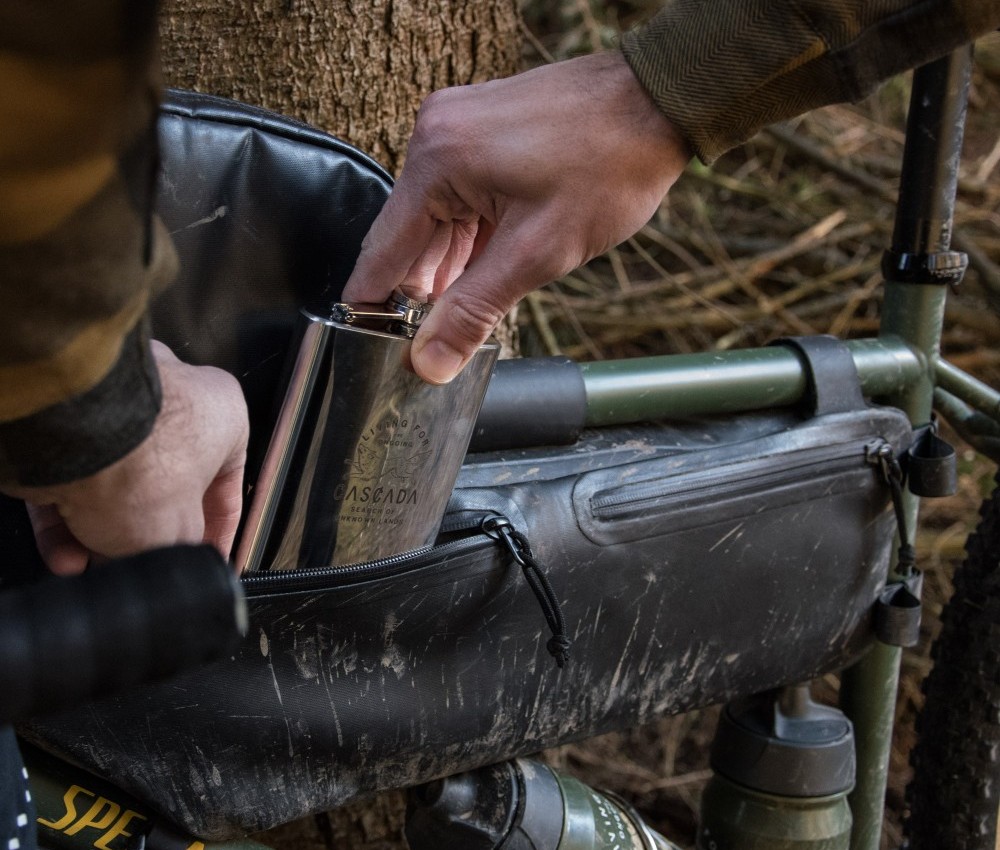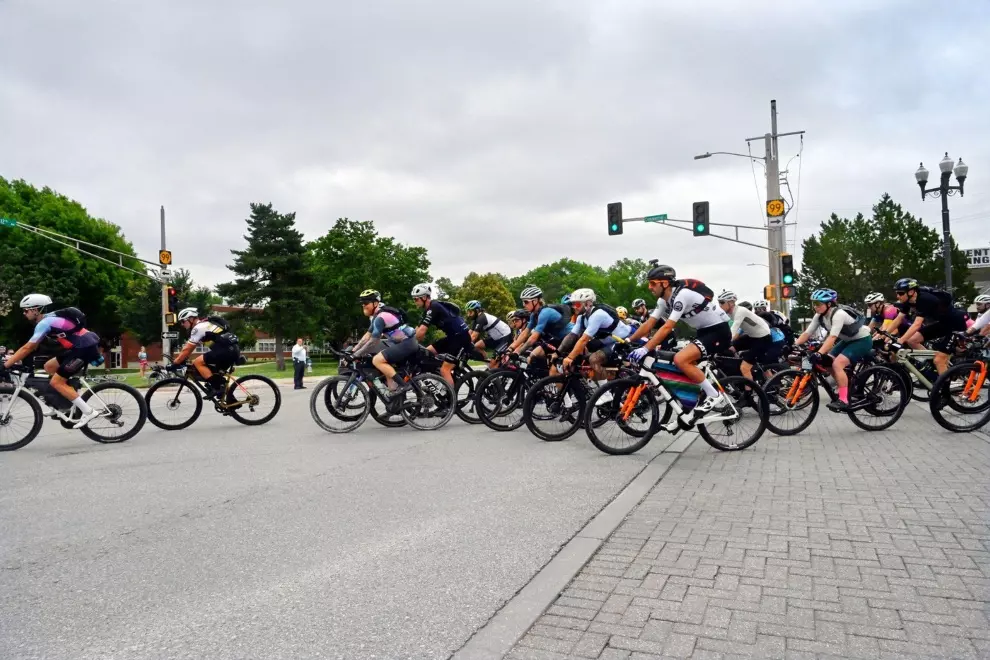Camping stoves
Unless you plan to buy food for breakfast/lunch/dinner on the way, you will need to plan how to cook as you cannot carry too much food with you, especially with bikepacking bags.
This article is not about extreme travels that need very sophisticated gear to face extreme winds, temperatures or the lack of fuel. It is for the majority of us, leisure bikepackers, who are still trying to get to the playful part of this amazing activity even when putting in some decent mileage.
So, I think that the most important factor to consider when choosing a stove is what kind of fuel it needs. Based on this, I would say there are four main types: multi-fuel, gas-cartridge, liquid-fuel and wood-burning stoves.
Multi-fuel/hybrid
Back in the day, my very first stove was a multi-fuel one. I always thought that it was better to be ready for anything. Later, I found out that cooking your meal with petrol from a gas station is not exactly the best as it is very smelly and leaves the stove dirty – so, unless I ride through a very remote exotic destination, a multi-fuel stove is not my first choice anymore. They are also heavier and take up quite a lot of space so I wouldn’t call them minimalist.
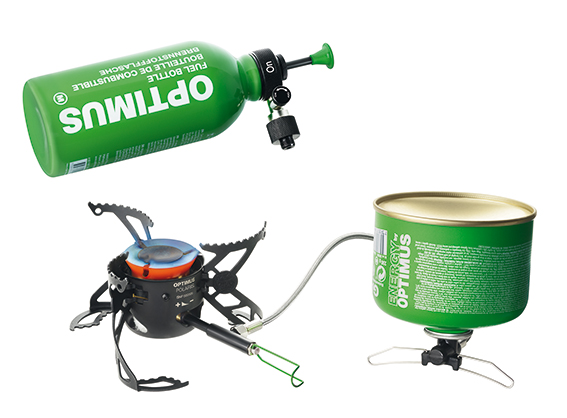
Cartridge stoves
This kind of stoves use cartridges containing gas (butane, propane, a mix of the two). They are very easy to use. In fact, if you take a walk through a camping area, you will see that most people are using them. They are clean as you do not get in contact with the fuel and they are light, my Optimus Crux Light is about 72 grams. You can also choose the size of the cartridge based on the length and needs of your trip, which makes them more flexible. For bikepacking, I have one cartridge that weighs fewer than 200 g and another one that is almost 500 g in my van.
So, if I cycle around my home country or travel somewhere by car, these stoves are my favourite choice. If I travel by plane, they can be a problem as you cannot board the cartridge and I don’t want to risk losing time at the destination looking for a shop that sells them. Also, in windy places, they can be quite tricky so a windshield could be a good idea (more about accessories below). I still remember how my pasta-cooking water took ages to boil when I was biking the Irish West Coast.
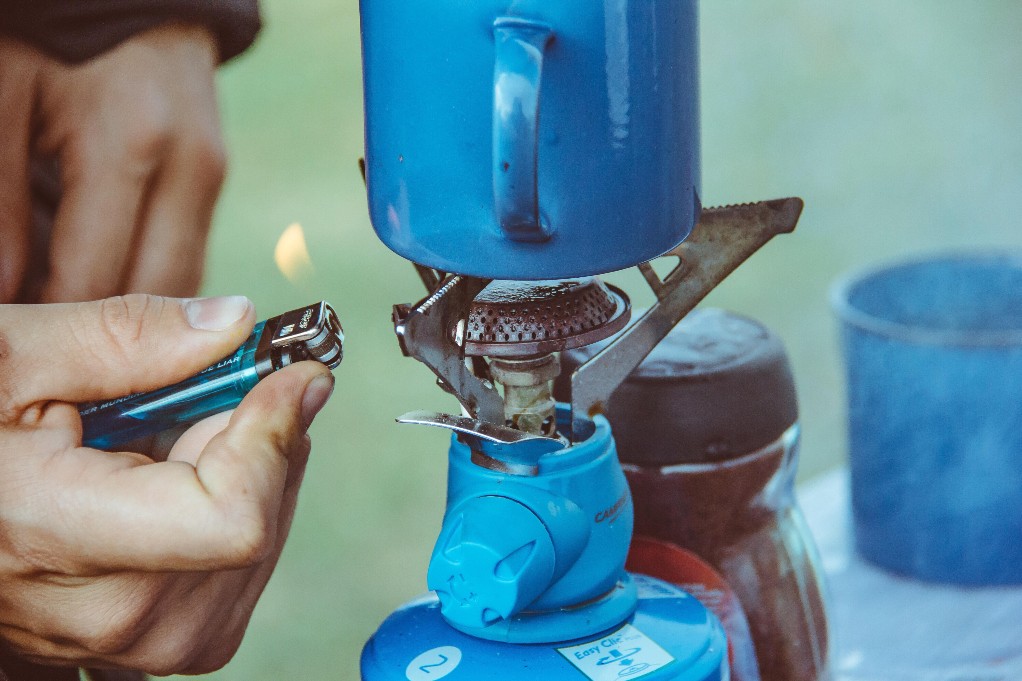
Liquid-fuel stoves
When travelling to your destination by plane, an alcohol-burning stove is a very good option as all you need is a liquid that contains more than 70% of alcohol, which you can buy in many different shops like supermarkets, pharmacies or hardware stores upon arrival. It is a low-cost, safe and readily available option as stated on the Trangia website, probably the most famous spirit stove producer I know. They have been around since 1925 so I guess they are doing it right. What bothers me about this way of cooking is that I need to think about how to carry the alcohol around. In fact, you need a specific bottle for that, meaning extra thinking. What I love about this system, apart from being great for international travelling, is that you don’t actually need any gear for last-minute cooking. You can just use a beer or a soda can and it is a pretty cool thing to do. There are many DIY tutorials online, I like this one in particular.

Wood stoves
Wood stoves can be cheap and minimalist and all you need is some wood. On the other hand, cooking takes longer and it is not possible to make fire everywhere. Also, fire attracts attention. I think they are very cool and cosy for particular occasions and surely very pic-friendly but have limited usage, in my opinion. Often in summer, my friends and I just ride a few kilometres outside of Prague and spend the night in the hills above the capital. On that occasion, we use the wood-burning stove because it helps with creating a great atmosphere. I have a Oakvue that I bought on Amazon.
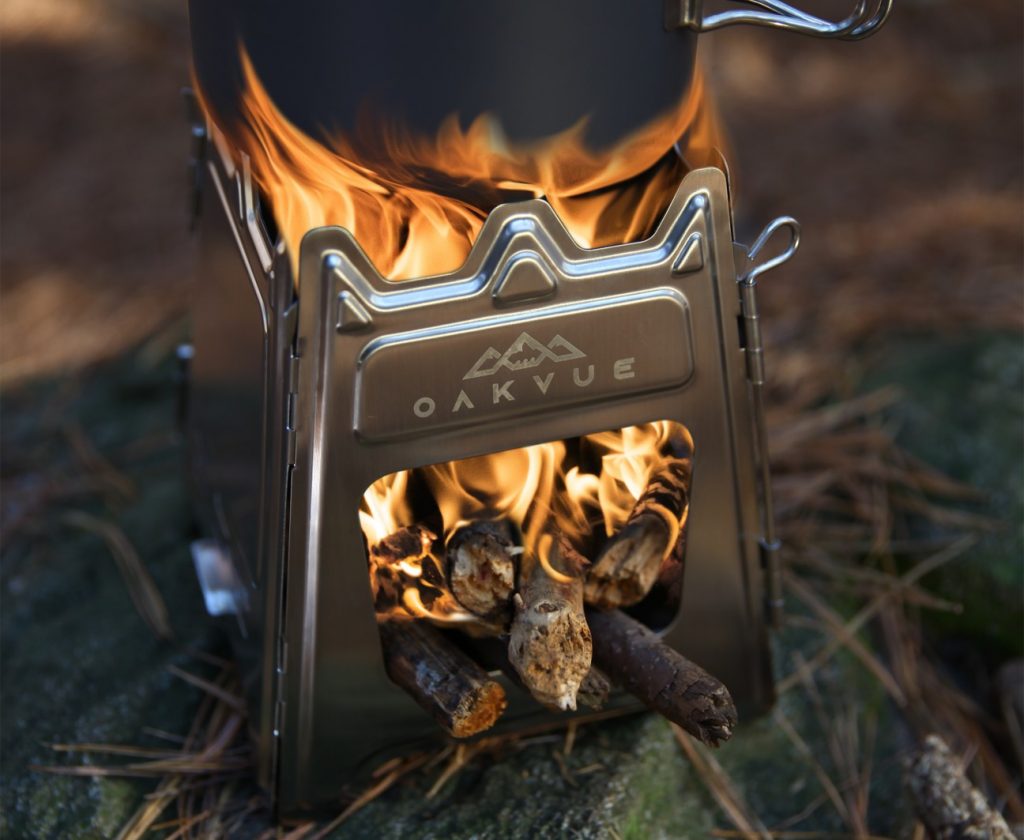
Accessories
Cooking set
When you have a stove, you also need a cooking set. Luckily, almost every stove producer sells a dedicated cooking set. For me, the rule is that it needs to fit in my bikepacking front fork bag as I mentioned in my previous article.

Windshield
Especially for cartridge stoves, a windshield is often needed (but not necessary) as the flame is exposed to the wind. There are many windshield options even including DIY ones made from a can. I prefer not to take it with me to save space unless the wind is really strong (Ireland, Northern Europe, costal rides).
Flask
From time to time, I like to have a good-night cap with friends. Maybe because we celebrate somebody’s birthday, an achievement or just a good trip that came to an end. So, if I have space, I bring my flask (full of rum or grappa). I use one from Cascada but there are many different sizes and shapes on the market.
Coffee making
Coffee making is a big part of the bikepacking culture. A very important ritual. There are many ways to enjoy a cup of coffee from the comfort of your hammock or tent, surrounded by beautiful nature. The simplest way is to use instant coffee. Not great but better than nothing. The most iconic way is probably to use an Italian moka. Of course, it takes a lot of space but it is my favourite system for short local weekend trips around.
Then there are amazing and sophisticated products to make high-quality coffee and surprise your friends like, for example, Aeropress Go (326gr.) or Nanopresso (336gr.). They are both not exactly cheap but they are small and the results are incredibly enjoyable.
Ready-to-eat food
Apart from cooking, I always carry some ready-to-eat food. I am not going to talk about bars or gels you all know, I would like to share some other tips for highly energetic foods I find very useful, especially when riding extreme distances such as, for example, the Rando Imperator, which I enjoy almost every May. It consists of riding at least 350 km nonstop across the Alps in any kind of weather.
I am originally from Italy, specifically from the Grana Padano region. We all know there that Grana is a superfood, able to give you almost god-like powers. So, when I ride long distances, I always have a bag of cubed Grana with me.
Moreover, I always carry dried meat (jerky). It is a great source of protein, it tastes amazing and it is easy to transport. Ideally, I get some locally made from friends but if it is not available, there are more and more brands out there as it is getting increasingly popular. Normally I buy this one as it is made not far from my shop in Prague but is distributed all over Europe.
Last but not least, I always have nuts and dried fruit with me. They are essential superfoods for a cyclist. The only problem I have with this food is that I get tired of eating them throughout the day and when my throat is dr, they make me cough a lot. In those cases, I go back to Grana and jerky.

